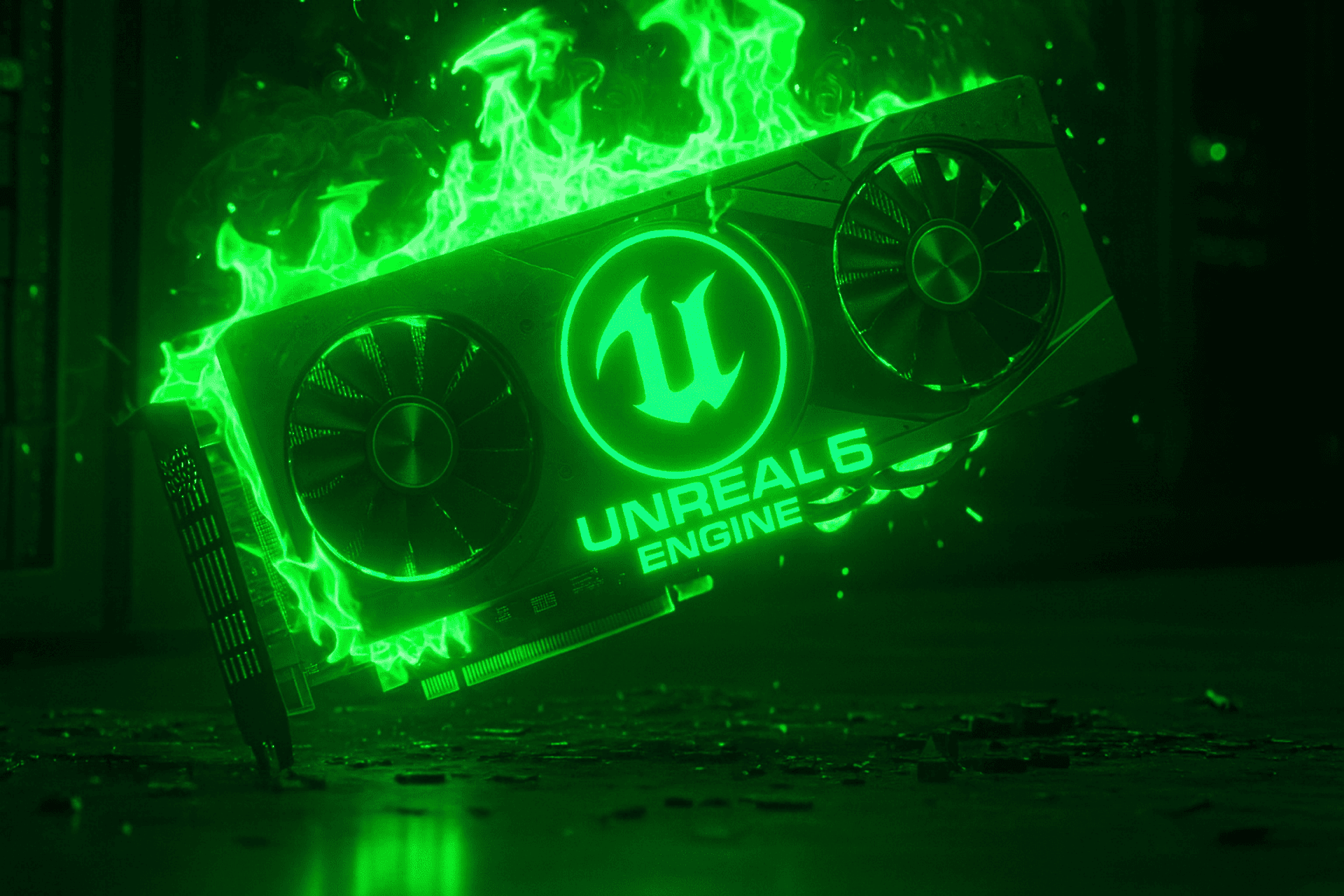Not even the most powerful RTX manage to maintain stable 60 FPS in current games.
More stories in the category PC
- Download now for free the seventh free game of the Epic Games Store for 24 hours
- Get 4 PC games for free and forever
- Get a new Steam expansion for free, saving you 35 euros for a limited time
| Don't miss anything and follow us on Google News! |
More and more PC gamers are wondering what’s going on with Unreal Engine 5. The promise of a next-generation graphics engine is being marred by an obvious problem: performance. Even with high-end graphics cards costing over $1,500, such as the RTX 4090 or 5080, the results are far from what this level of hardware should offer.
Forums and social media are filled with comments from users who claim that their games “run well” on these top-of-the-line graphics cards, but when the data is analyzed in detail, the reality is different: average frame rates of 60 FPS with drops below 40 FPS in 1440p or 4K, and a 0.1% frame rate that barely reaches 3 FPS. Stuttering, lack of smoothness, and an experience that, honestly, doesn’t justify the investment in a GPU costing over $1,500.
Unreal Engine 5 and the Real Bottleneck on PC
The most worrying thing is that this pattern is repeated in almost all games developed with UE5 to date. We’re not talking about an isolated problem, but something that seems to be at the core of the engine: lack of real optimization on PC. The paradox is that on consoles like the PS5 or Xbox Series, titles run with less stuttering, but at the cost of internal resolutions that often drop below 1080p in Quality mode and hover around 720p in Performance mode, relying almost always on upscaling.
We’ve already talked about this on Xbox Generation, and the reality is that complaints are growing. The clearest example is Mafia: The Old Country. Even with an RTX 4090, at 1080p, with epic settings, the game can’t maintain stable 60 FPS, dropping below that figure at times. At 1440p, performance ranges from 42 to 51 FPS, and in 4K, it drops to 30-39 FPS. In the case of the RTX 5080, the average at 1080p is around 55 FPS, and in 1440p or 4K, it’s impossible to exceed 60 FPS without resorting to DLSS 4 with frame generation.
The problem is that even with DLSS 4, visual artifacts are evident: blurry subtitles, flickering vegetation, and elements that don’t quite fit together. In fact, surprisingly, the TSR technology integrated into the engine itself offers a more stable and sharper result than DLSS 4 in this game.
The final conclusion is clear: there’s a root problem with Unreal Engine 5. If Epic Games doesn’t improve the engine’s optimization on PC, we’re heading towards an absurd situation: having to spend over $1,200 on a GPU to, in the end, play at 1080p with frame drops and rely on upscaling. The risk is evident: going back to the era of 720p disguised as “next-generation”.






